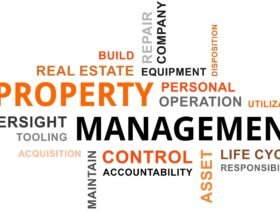Vietnam, with its rich history, stunning landscapes, and vibrant culture, beckons travelers from around the globe. If you’re looking to experience this Southeast Asian gem without breaking the bank, you’re in for a treat. From bustling cities to serene countryside, Vietnam offers a plethora of experiences that won’t strain your wallet. Here’s your ultimate guide to exploring Vietnam on a budget, including must-see places, transportation tips, accommodation options, and safety considerations for female travelers.
Why Visit Vietnam?
Vietnam boasts a diverse range of attractions that cater to every traveler’s interest. Whether you’re drawn to ancient temples, pristine beaches, bustling markets, or mouthwatering street food, Vietnam has it all. The country’s affordability makes it an ideal destination for budget-conscious travelers without compromising on adventure or cultural immersion.
Must-See Places in Vietnam
- Hanoi
Explore Vietnam’s vibrant capital city, Hanoi, known for its bustling Old Quarter, ancient temples, and French colonial architecture. Don’t miss the serene Hoan Kiem Lake and the historic Ho Chi Minh Mausoleum. Dive into local culture with a visit to the Dong Xuan Market and indulge in street food delicacies like pho and banh mi.
Accommodation: Find Hotels in Hanoi
Transportation: Navigate Hanoi using affordable local buses or ride-sharing services.
- Halong Bay
Marvel at the breathtaking limestone karsts and emerald waters of Halong Bay, a UNESCO World Heritage Site. Take a budget-friendly cruise to explore hidden caves, kayak through serene waters, and witness stunning sunsets over the bay.
Accommodation: Find Cruises and Stays in Halong Bay
Transportation: Reach Halong Bay from Hanoi by bus or organized tours for a hassle-free journey.
- Hoi An
Step into the charming ancient town of Hoi An, known for its well-preserved architecture, lantern-lit streets, and vibrant markets. Explore the UNESCO-listed Old Town, visit historical sites like the Japanese Covered Bridge, and indulge in tailor-made clothing at budget-friendly prices.
Accommodation: Find Hotels in Hoi An
Transportation: Travel to Hoi An from major cities like Da Nang via local buses or taxis.
- Ho Chi Minh City (Saigon)
Experience the bustling energy of Ho Chi Minh City, where modern skyscrapers blend with colonial-era landmarks. Visit the historic Cu Chi Tunnels, explore the War Remnants Museum, and shop at the lively Ben Thanh Market. Don’t miss the vibrant nightlife and diverse culinary scene.
Accommodation: Find Hotels in Ho Chi Minh City
Transportation: Navigate Ho Chi Minh City with ease using taxis, motorbike taxis (xe om), or public buses.
Travel Tips for Budget Traveler
- Transportation: Use local buses or trains for intercity travel. Consider overnight buses for longer journeys to save on accommodation costs.
- Accommodation: Opt for budget guesthouses, hostels, or homestays which offer comfort at affordable rates.
- Food: Enjoy street food and local eateries for authentic Vietnamese cuisine at budget-friendly prices.
- Safety: Vietnam is generally safe for female travelers. Exercise usual precautions, especially at night, and avoid isolated areas.
Final Thoughts
Vietnam promises an unforgettable journey filled with cultural discoveries, natural wonders, and culinary delights, all within a budget-friendly framework. Whether you’re exploring ancient temples in Hanoi, cruising through Halong Bay’s majestic waters, or wandering the lantern-lit streets of Hoi An, Vietnam offers something magical for every traveler. Embrace the adventure, immerse yourself in local culture, and make lasting memories in this enchanting Southeast Asian destination.
Ready to embark on your budget-friendly Vietnam adventure? Start planning today and experience the best of Vietnam without breaking the bank!
Blog-4
Harmonizing Work and Life: Modern Strategies for Success
Achieving a balance between work and personal life is more than just a trendy topic; it’s a crucial aspect of maintaining overall well-being and long-term career satisfaction. In today’s fast-paced world, where the boundaries between work and personal time can easily blur, finding harmony is essential. Let’s delve into some effective strategies that can help you achieve this balance and enhance your productivity and happiness.
Understanding Work-Life Balance
Work-life balance is about creating equilibrium between the demands of your professional life and your personal commitments and interests. It’s not necessarily about spending an equal amount of time on both; rather, it’s about allocating your time and energy in a way that allows you to thrive in both domains without feeling overwhelmed or burnt out.
Why It Matters
Maintaining a healthy work-life balance is beneficial for several reasons:
- Enhanced Well-being: Balancing work and personal life reduces stress and improves overall mental and physical health.
- Increased Productivity: When you prioritize self-care and personal interests, you return to work refreshed and more focused.
- Stronger Relationships: Spending quality time with loved ones strengthens relationships and provides emotional support.
Strategies for Achieving Work-Life Harmony
1. Set Boundaries
Establish clear boundaries between work and personal time. Define specific work hours and stick to them as much as possible. Avoid checking work emails or taking work calls during personal time unless absolutely necessary.
2. Prioritize Tasks
Use time management techniques such as prioritization and delegation. Focus on high-impact tasks during work hours to maximize productivity. Delegate tasks when feasible to lighten your workload.
3. Practice Self-Care
Schedule regular breaks throughout the workday to recharge. Engage in activities that promote relaxation and reduce stress, such as exercise, meditation, or hobbies.
4. Communicate Effectively
Communicate your boundaries and availability to colleagues and supervisors. Set realistic expectations regarding response times and workload.
5. Unplug Regularly
Take regular breaks from technology, especially outside of work hours. Disconnecting from screens allows you to be present in the moment and reduces digital overload.
6. Invest in Personal Development
Allocate time for personal growth and development. Pursue hobbies, interests, or educational pursuits that bring you joy and fulfillment outside of work.
Embracing Work-Life Harmony
Achieving work-life harmony is an ongoing journey that requires self-awareness and intentional effort. It’s about making conscious choices that align with your values and priorities, both in your career and personal life. By implementing these strategies, you can cultivate a balanced lifestyle that fosters happiness, resilience, and long-term success.
Remember, achieving work-life harmony is not about perfection but about making small, sustainable changes that contribute to your overall well-being. Start by identifying areas where you can create more balance and gradually integrate these strategies into your daily routine. With time and persistence, you’ll discover a harmonious blend of work and life that enhances your overall quality of life.
Here’s to finding your own path to work-life harmony and thriving in every aspect of your life!
Follow Kalden on Instagram
Follow Kalden on Twitter
Follow Kalden on Facebook
Follow Kalden on LinkedIn
Follow Kalden on Youtube












Kalden Doma
An internationally renowned thought leader in rediscovering & mind training life skills. Kalden Doma has been delivering inspirational lectures across the globe for over 17 years. A driven entrepreneur, started a mind training academy in 2001. She coaches students, entrepreneurs, & executives.